
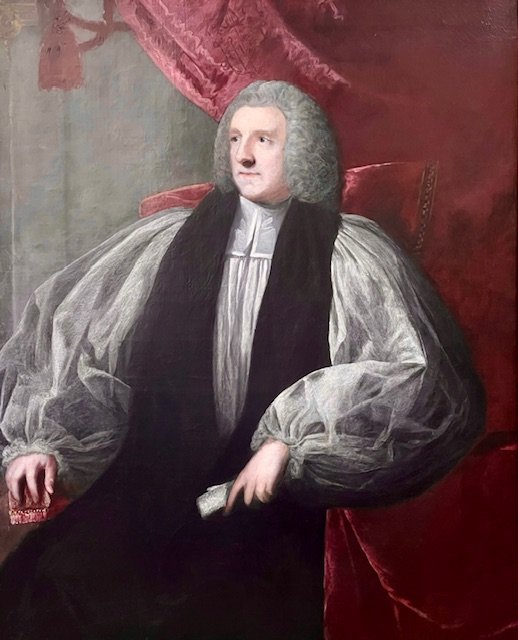
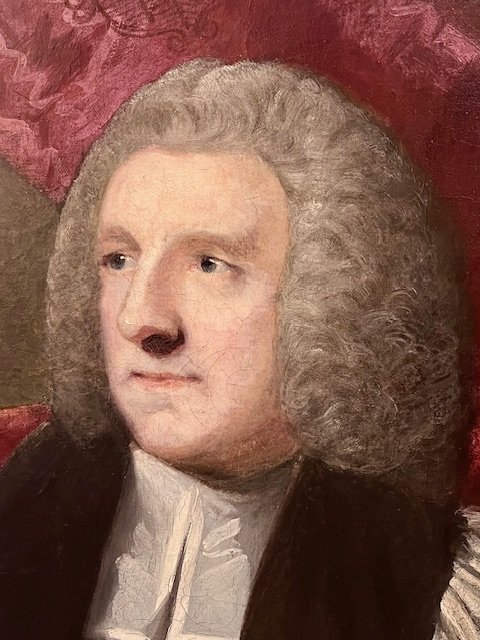


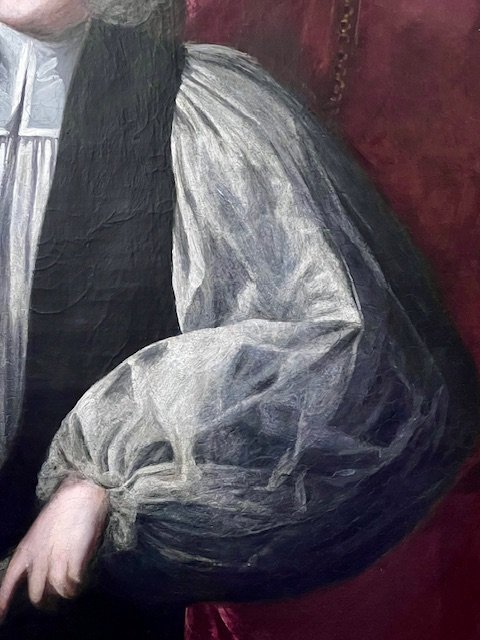
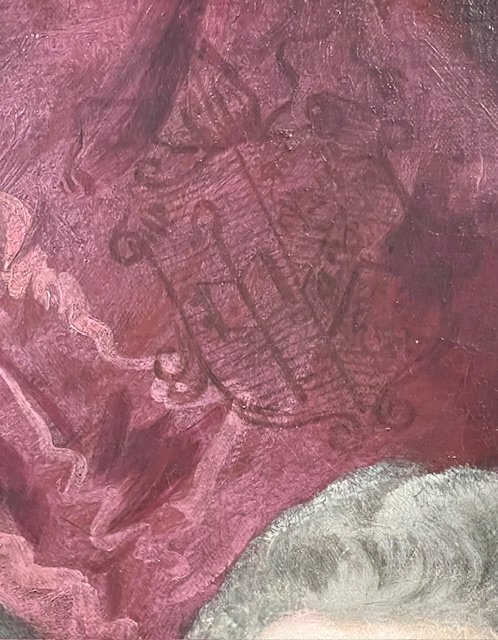
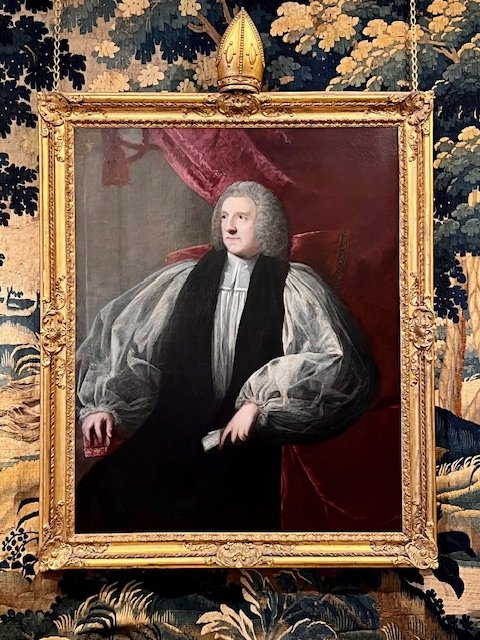
SIR JOSHUA REYNOLDS P.R.A.- ARCHBISHOP RICHARD ROBINSON OF ARMAGH
A fine, imposing and richly coloured portrait of Archbishop Richard Robinson of Armagh - by Sir Joshua Reynolds P.R.A. The sitter is depicted three-quarter length, seated, wearing clerical dress. This work was painted in 1758 when the sitter was Bishop of Killala (1751-59)
Sir Joshua Reynolds P.R.A (1723 -1792) Reynolds was the leading English portraitist of the 18th century. Through study of ancient and Italian Renaissance art, and of the work of Rembrandt, Rubens and Van Dyck, he brought great variety and dignity to British portraiture.
Reynolds was born at Plympton in Devon, the son of a headmaster and fellow of Balliol College, Oxford: a more educated background than that of most painters. He was apprenticed in 1740 to the fashionable London portraitist Thomas Hudson, who also trained Wright of Derby He spent 1749-52 abroad, mainly in Italy, and set up practice in London shortly after his return.
He soon established himself as the leading portrait painter, though he was never popular with George III. He was a key figure in the intellectual life of London, and a friend of Dr Johnson. When the Royal Academy was founded in 1768, Reynolds was elected its first President. Although believing that history painting was the noblest work of the painter, he had little opportunity to practise it, and his greatest works are his portraits.
Archbishop Richard Robinson (1708–1794) Born into a wealthy family in Rokeby, Yorkshire in 1708, Richard Robinson first came to Ireland in 1751 as Chaplain to the Lord Lieutenant, the King's representative in Ireland. He was made Archbishop of Armagh in 1765.
As an educated and enlightened man, he resolved to use his wealth and power to found and maintain charitable and educational institutions, particularly in Armagh. He employed some of the foremost architects of his day, Thomas Cooley and Francis Johnston, to design buildings and plan his cathedral city.
He had excellent social and political connections, coming into contact with intellectuals such as Dr Johnson and Edmund Burke and therefore with all the issues of the day. Richard Robinson, Lord Archbishop of Armagh, was a rich and influential man who embodied the spirit of his age.
Provenance: The Robertson - Glasgow family collection. Leeds Castle Kent until deaccessioned.
Literature: The Rev. J. Nightingale, The Beauties of England and Wales, vol. XIII - part 1, London 1813, p.456; 1848 Inventory, p. 5; D. Mannings, Sir Joshua Reynolds, London 2000, text vol. pp. 394-95, no. 1534, plate vol. fig. 359
Higher resolution images on request. Worldwide shipping available.
Canvas: 50” x 40” / 127cm x 102cm Frame: 56.5” x 48” /144cm x 122cm
Price: £18250

